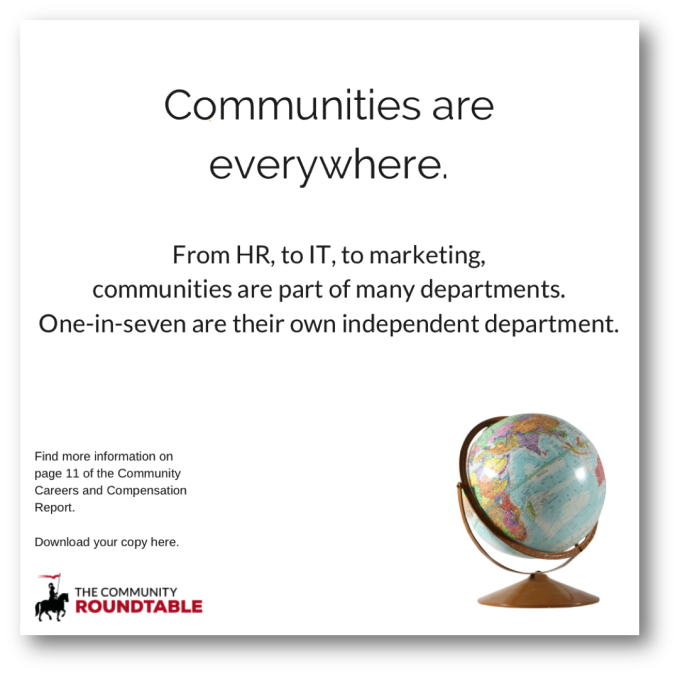By Ted McEnroe, Head of Research, The Community Roundtable
Online communities are sort of like chameleons. When they are fully integrated, they can blend into whatever scene they’re in. It’s perhaps the greatest strength of community approaches – they can work in any part of an organization, serve any of a number of purposes, and work with members at any level.
 And the numbers from the Community Careers and Compensation 2015 report back it up.
And the numbers from the Community Careers and Compensation 2015 report back it up.
Community programs reside in departments from HR to IT to marketing, with 1-in-7 communities serving as their own department. Ideally, that means that community programs are fitting in where it is most appropriate for the organization. In about a quarter of cases, they sit in other areas – departments such as innovation and business advancement that focus on the future of the organization.
In general, we see this as a very good thing, with a couple of caveats. First is a structural one. Because communities are relatively new in many organizations, there may not be clear best practices and lines of communication established for them with the rest of the business. But because they can fit anywhere in an organization, best practices for establishing and connecting community programs with the rest of the organization are not necessarily easy to come by.
Second, there is the risk that communities are vulnerable to changes in leadership. Reporting to a marketing VP who understands community can be a great opportunity. If that VP is replaced by someone without community in their background, the program may be vulnerable and it falls to the community team leadership to make the case upward when there aren’t always a lot of comparable programs to highlight. That’s why community practitioners need to have an eye out always for resources that can be used to educate stakeholders. We hope our research is on your short list.
While communities’ home bases may be scattered throughout organizations, though, there are more signs than ever that communities are seen as integral to company strategies. One piece of evidence is in reporting structures. We asked Directors of Community to whom they reported, and more than 80 percent of them reported to VPs, Senior VPs, or C-level executives. Just under half reported straight to the C-suite. Data like this, and the growing number of communities that have their budgets approved by upper management, demonstrate that in many organizations, communities have the attention of top-level executives, a powerful force for moving communities forward and improving engagement.

Where should your community department fit in your organization? It depends on your goals – but ensuring the community and its value are understood across the organization is a critical – and unending – need for any community team.
Get more data on the roles, skills and salaries of community professionals by downloading the Community Careers and Compensation 2015 Summary. better yet, take the survey and receive the full report for free – with more details about the roles and skills of community professionals that can make a difference for your community – and your own career.
